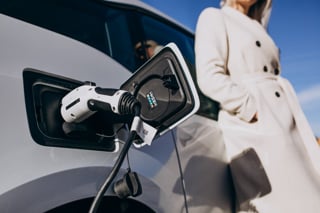Dylan Setterfield, head of forecast strategy at cap hpi, explores what 2024 may hold in the wake of the market realignment at the end of 2023.
The last few months have seen volumes of used vehicles increase as retail demand has remained subdued. The market realignment has been reported by the cap hpi valuations team and discussed across the industry.
It’s worth taking a step back to note that in December 2023, the average used car at three years and 60,000 miles is twice as expensive compared to the same month in 2019, although there is considerable impact from model and fuel type mix. Comparing cars available at 36 months / 60,000 miles then and now still results in today’s values being, on average, almost 16% higher than they were four years ago.
The current short-term glut of used vehicles, due to overdue cars from bulging order banks being replaced, is expected to ease over the coming weeks, and large vendors are expected to revert to more traditional used car pricing strategies.
We can expect a relatively steady start to the year for valuations in 2024, as although retail demand is expected to increase, there is likely to be a considerable amount of forced registration activity from the OEMs at the end of 2023, which will result in additional used volume in the short term. In addition, there will be plenty of used cars in the wholesale market still swilling around from low conversion rates in the final quarter of 2023.
Seasonality
The expected monthly movements in January and February are worse than typical seasonality, but increasingly, as we head through the year, we start to see the impact of reduced registrations through the pandemic, resulting in lower levels of used car supply, especially for three to four-year-old cars (total shortfall compared to pre-Covid “normal” approx. 2.5 million cars and roughly two-thirds of these from fleet and business).
Retail demand is also expected to increase through the year as inflation continues to reduce and interest rates begin to decrease slowly. The cap hpi forecast is for monthly used value movements from March (April book) onwards to be, on average, +0.5% per month better than typical seasonality.
BEV volumes will continue to increase, but demand is also expected to continue to broadly keep pace. Used values for the majority of BEV models are currently BELOW those of ICE equivalents. Although some stabilisation in used values is expected for those BEV models which have seen the biggest reductions (in some cases more than 50%), this is broadly expected to remain the case. The lack of petrol/diesel volumes will also prevent significant further reductions in most ICE models.
Buyers are expected to continue to pay good prices for the best-condition cars due to a number of factors, including continued parts shortages and repair capacity. It may well result in further increases in the differences between Clean and Average/Below, and it’s worth noting our forecasts are always for cars in Clean condition.
Some commentators have suggested that 2024 will be the year of the BEV due to the ZEV mandate. Arguably, every year from now on will be the year of the BEV. From 2024, 22% of cars and 10% of vans will need to be zero-emission, with the share increasing yearly, arriving at 80% in 2030 and 100% in 2035.
ZEV mandate
Some large OEMs are not expected to meet the ZEV mandate targets of 22% BEV. They will be forced to use one or more of the ‘flexibilities’ available to them, but total BEV volumes are expected to meet or slightly exceed the ZEV mandate level in 2024, depending on market penetration from some of the new entrants. This is not expected to be the case from 2028, when the required BEV share increases significantly unless a considerable proportion of ICE models are discontinued, and overall new car volumes are reduced.
The next 12 months are not without challenges; we will likely face a general election, although this could be as late as January 2025, with the disruption the process usually brings, and the economy is predicted to remain sluggish. However, the large market movements the industry has seen in recent weeks look set to return to something much more similar to seasonal norms from the Spring of next year.


















Login to comment
Comments
No comments have been made yet.